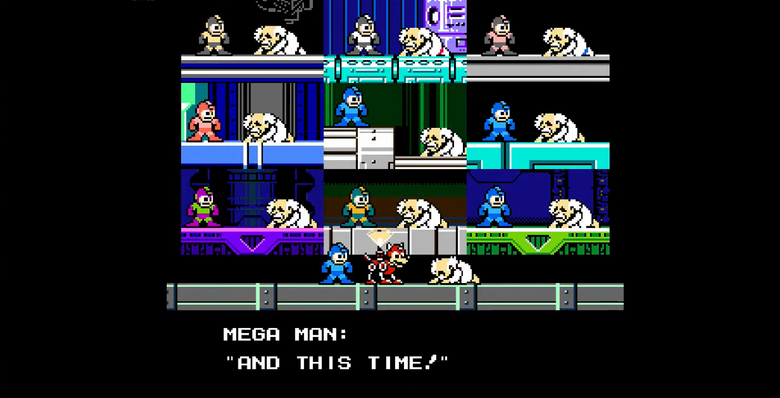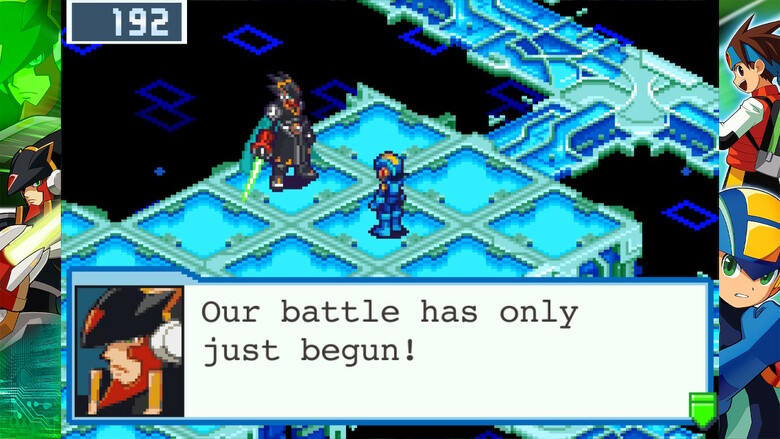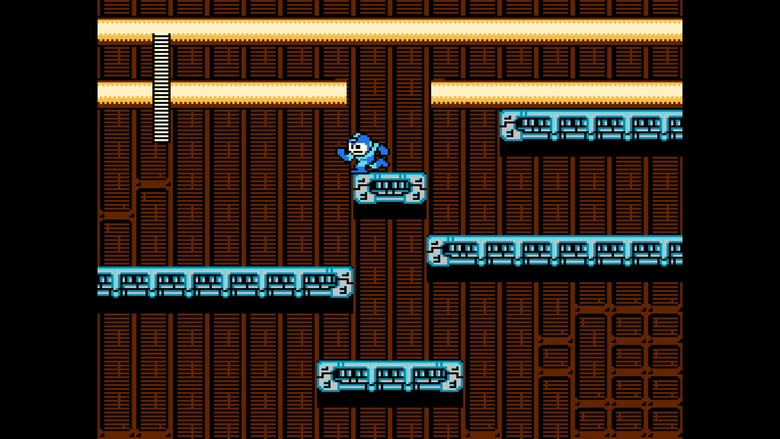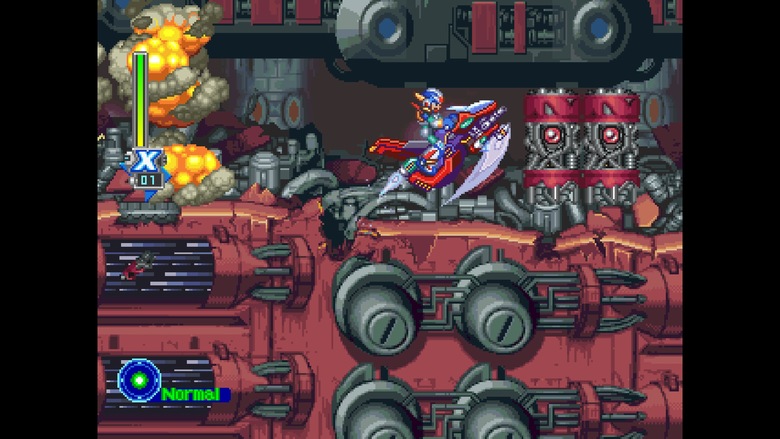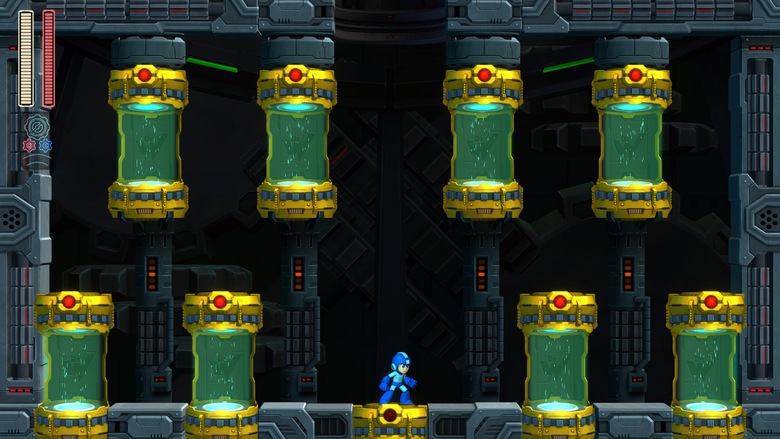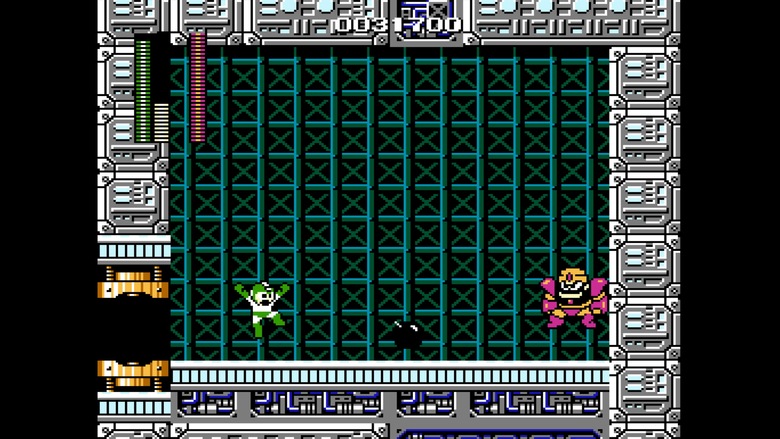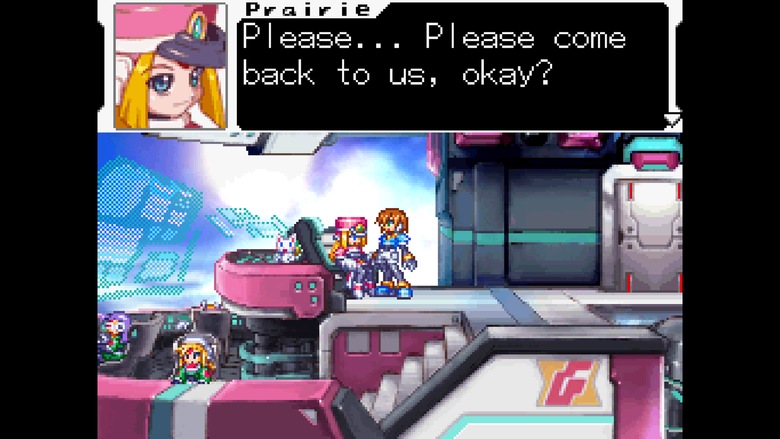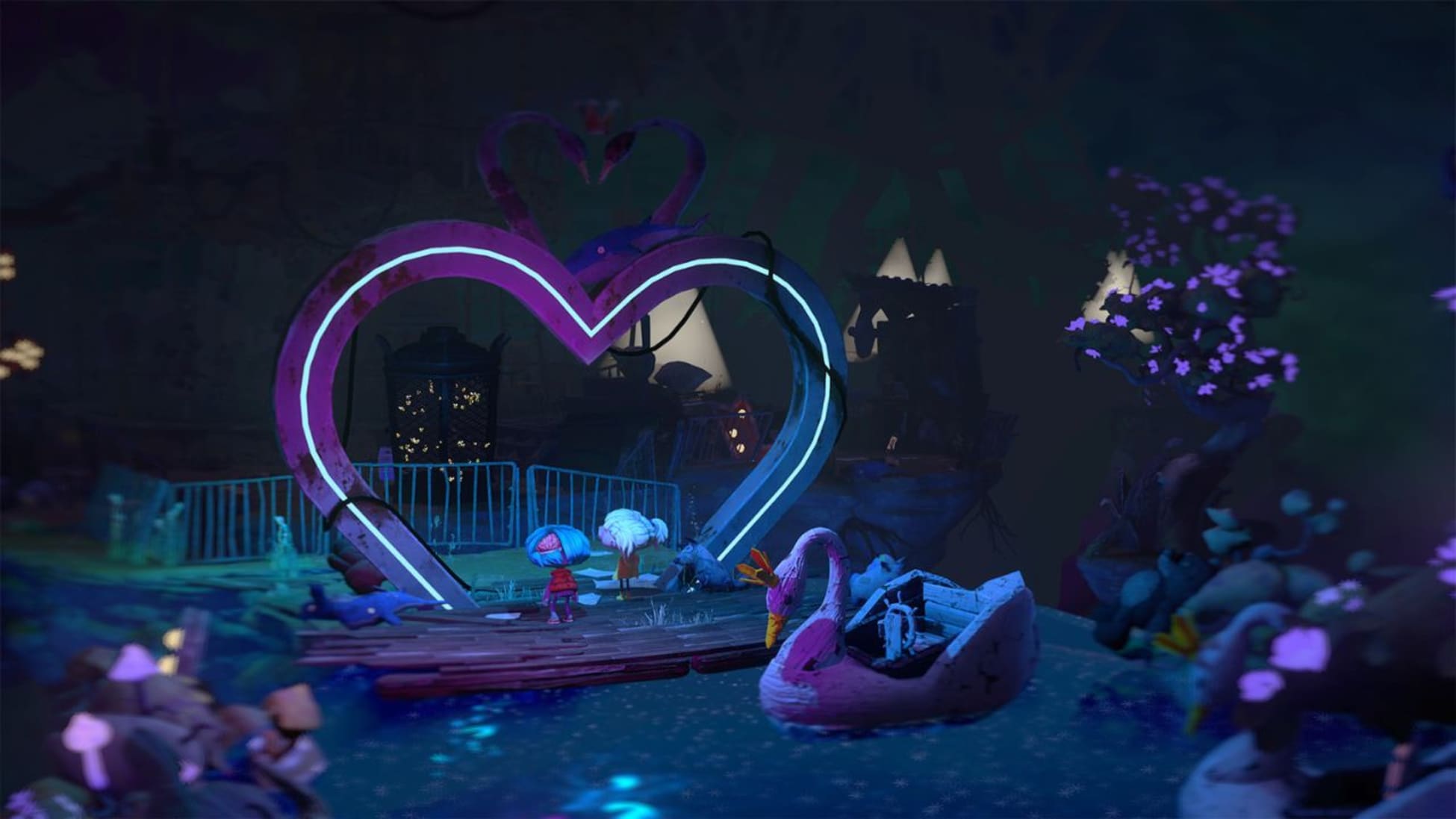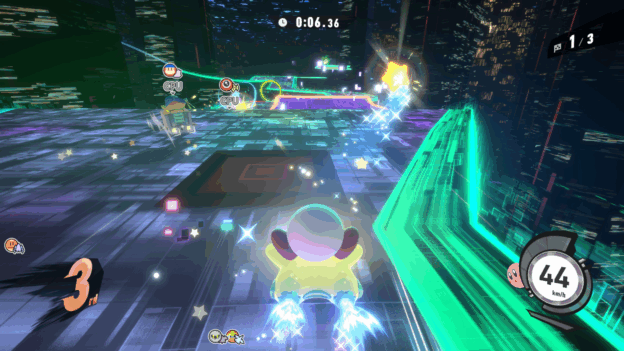Repetition Reinforces Mega Man’s Strengths – Mega Man Monthly
Everyone repeats. Be it by choice or by circumstance, we all fall into some semblance of daily routine. While overfamiliarity can wear us down or make us unhappy, repetition offers some upsides as well. It helps us identify what we do like, and through repeated interactions, allows us to gain a deeper appreciation for the things that are important to us. And as we all know, nothing is more important than Mega Man. The repetitive nature of Mega Man reinforces his greatest strengths.
Mega Man is undoubtedly repetitive. His games cover a lot of the same ground and there are a lot of them to boot. When you play Mega Man, you can generally expect to fight a group of evil robots in a nonlinear order, precisely jump over any obstacles they lay in their way, take their powers, and eventually take the fight to the mastermind’s fortress at the end. Mega Man follows a formula – and while its various spin-offs may branch off into their own formulas, they adhere to them just as closely.
Repetition gets a bad reputation. Read any bad review of a video game, and the “repetitive” complaint stands an abnormally high chance of jumping out at you, like one of those enemies that hide in pits when you try to jump across them. Read virtually any review of a Mega Man game, and some snide comment about how similar the games he stars in are will fall on you, like one of those bird robots that drop the eggs. I have never liked how people held Mega Man’s formulaic nature against him.
The “repetitive” or “same-y” category of complaint fails to address the real issue and frames repetition for a murder it didn’t commit. The real issue lies not with the fact that Mega Man games used a similar foundation, but rather that the people writing about these games don’t care much for that foundation (or Mega Man) in the first place.
Deep down, people actually love repetition. If we didn’t, no one would actively choose to live in the same areas, interact with the same people, or do the same things on any sort of long-term basis. We replay old favorites and crave follow-ups to our favorite games because we want to repeat the things we like. We like repeating the things we like. If someone complains about something being repetitive, the problem lies not with the repetition itself, but rather the thing being repeated. For those who do enjoy Mega Man for what it is, repetition likely plays a vital role in its appeal.
Learning forms an essential part of the Mega Man experience, and as they say, repetition is the mother of learning. Who says that? Well, at the very least, I do. I also say that when you’re playing a game, you’re constantly absorbing information. The more you play Mega Man, the more you understand Mega Man – how he moves, how to control his jumps, and how the enemies act.
Often you’ll make mistakes, but Mega Man stages rarely run long and they allow for infinite chances to continue and try again. Due to this generous gift from the designers, it’s fair to say that they actively intend for you to die and repeat levels until you learn how to overcome your mistakes.
Some stages make this more obvious than others. Quick Man’s stage demonstrates how the act of repetition can be used to emphasize Mega Man’s freeform design in a particularly creative way. You can grind out the stage until you master the lasers or you can make the level much easier on yourself by going into it with Flash Man’s Time Stopper weapon first. The former provides a solid sense of satisfaction, while the latter makes it feel like you’ve outsmarted Quick Man. Depending on your approach, the stage either ramps up the challenge to its most extreme or shows just how easy things can get with the right tools.
Improving at one Mega Man game also helps you for more than just that game. No, it won’t help you pay your bills or earn your degree, but you will gain an understanding of Mega Man that transfers from game to game, which is just as good.
The fact that Mega Man uses a similar foundation allows for each entry to maintain a sense of identity and consistency. When you play a new Mega Man, even if it has minor differences, your skills transfer over. You develop a “Mega Man muscle,” which is probably the worst possible way to describe something in relation to playing video games, but it’s true. This built-in sense of comfort allows you to bypass the learning period most developers need to worry about when designing their game.
That process works especially well for Mega Man, which expects you to select your stages in an undefined order, so the developers can’t rely on much on a traditional difficulty curve. Later games would add intro stages or try to stagger out the bosses in waves of four to control the difficulty a little, but in reality, your first Mega Man game as a whole, whatever it may be, is the true tutorial.
Of course, the crux of why Mega Man’s repetition works rests in the fact that each Mega Man game is different. Really! Despite their repetitive reputation, and despite the formulas they follow, each Mega Man game adds its own unique twists and turns. The nuances to Mega Man’s movement, how the special weapons function, the level designs, and the bosses differ enough from game to game to give each entry its own identity. All you need to confirm this is to find any random social media or message board post asking what the best Mega Man game is – you’ll readily find passionate defenders eager to dissect and proclaim the nuances of their favorite entry.
Going from one Mega Man game to another feels a lot like going from driving one car to another. The fundamentals still apply, but each entry has its own nuances that you need to adjust your fundamentals to complete effectively. While you feel this effect most prominently going from game to game, that “similar but slightly different” philosophy actually applies directly to the design of each game individually as well.
I’m talking about the boss refights: a core pillar of the Mega Man experience. While the concept likely comes from how arcade games would often pad out their finales, forcing you to conquer your toughest foes again does pose a rather unappreciated challenge, especially for Mega Man.
I actually like the idea of fighting bosses again in a gauntlet a lot, depending on the game. Many bosses represent tests of particular mechanics or skills. If you conquer them once, those skills you gained aren’t likely to outright leave you. They broadly carry over for the rest of the game. Being able to dredge up the specifics of those lessons for rematches on the fly can make you feel a lot more powerful than when you started the game, even if your character isn’t literally stronger than before. It’s all in the mind! People often replay games they know well for similar reasons. Boss refights give you a small glimpse of what full mastery of the game looks like.
In Mega Man’s case, the rematches add extra layers to the experience that you don’t get to fully appreciate before during the first encounters. Unlike your initial run through the stages, you now have Mega Man’s full arsenal at your disposal. This allows you to defeat every boss with their weakness, even the one you originally had to defeat with the normal buster. More importantly, however, it also gives you freedom to try out all of your weapons and see how they interact with the bosses. While there are often objectively best weapons to use, experimentation can lead to some fun surprises. I think just about every Mega Man veteran has Metal Man’s weakness to himself permanently etched into their brain.
These refights also tend to slightly rework the context of the original fights. Whereas the original fights took place in rooms with specialized layouts, the refights will often occur in more generic layouts. That can make some bosses easier and others more difficult. Quick Man and Guts Man fights always stand out to me because they remove some of the terrain that otherwise defines how you approach their battles. Small variations like these refresh the fights more than you might expect.
Of course, the biggest change comes from the fact that you usually need to take all of these bosses out in one go. This gauntlet approach turns these fights not just into tests of mastery, but tests of endurance. How you manage your health and weapon energy can often affect how you approach the Dr. Wily fight at the end, adding a layer of strategy that wasn’t present before.
Truthfully, the boss refights only represent the most extreme example of how Mega Man repeats elements to its advantage. Many mechanics and ideas find new life between levels and even between games. Mega Man game design constantly builds on itself through repetition and reinforcement.
The Mega Man game in question doesn’t even need to be a traditional platformer to take advantage of repetition. Many of the Mega Man games that contain RPG elements often require you to return back to hub areas or run through the same areas repeatedly. Is this padding to an extent? Sure. However, the concept of returning to areas often comes with an additional benefit of creating familiarity and appreciation for the world of the game.
ACDC Town in Battle Network, Echo Ridge in Star Force, Central Town in Legends, the Resistance Bases in Mega Man Zero, the Guardian Base in ZX…all of these areas could be considered the “homes” of their respective games. No matter where your adventures in these games take you, they always bring you back to these places. They often serve as springboards that launch you into the rest of the game – the internet connections in ACDC become a gate you pass through to reach other areas of the next, while the Town on Kattleox serves as a central hub you must pass through to reach the various corners of the island.
These areas ground the player firmly in the world of each series. NPCs will frequently update their dialogue based on story events while side quests will further flesh them out. The simple act of running through the same areas establishes a familiarity with them, much like exploring your neighborhood in real life. Through all of the repeat contact, these areas begin to exude a coziness.
Personally, I think that coziness extends to Mega Man as a whole. The way that this series uses repetition allows for not only your skills to transfer between games, but your feelings. Eventually, Mega Man itself feels like “home.” I suspect that goes some way in explaining Mega Man’s longevity, and especially the near constant demand for new entries.
For many, Mega Man contains specific familiar elements that few other games capture and even fewer lack the amount of entries to establish. That long lineage of repetition gives Mega Man a home in people’s minds and in turn those people a constant home to return to.

